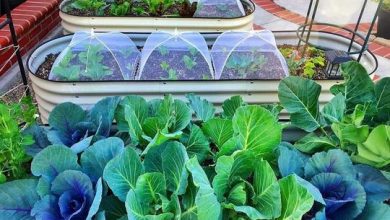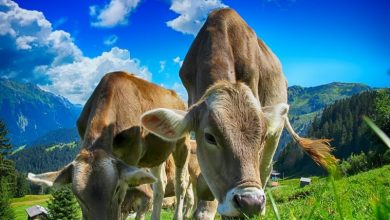Harvesting Tomorrow: AI’s Role in Sustainable Agriculture

As the global population burgeons, set to reach nearly 10 billion by 2050, the demand for food production increases exponentially. This surge necessitates a paradigm shift towards more efficient, sustainable farming practices that can cater to this demand without depleting the earth’s finite resources.
AI emerges as a beacon of hope in this context, offering innovative solutions to enhance productivity, conserve resources, and mitigate the environmental footprint of traditional farming methods.
One pivotal area where AI is making significant inroads is in sales automation tools for the agriculture sector. These tools are not just revolutionizing the way products are marketed and sold but are also instrumental in streamlining operations, ensuring that sustainable practices are not only adopted but also efficiently managed.
A prime example of this innovation is the AI sales automation tool, which is setting new benchmarks in how agricultural products are brought to market, ensuring that sustainability remains at the core of agricultural practices.
The Need for Sustainable Practices
The imperatives for sustainable agriculture are clearer today than ever before. Climate change, with its attendant challenges like erratic rainfall, temperature fluctuations, and extreme weather events, poses a significant threat to traditional farming practices.
Moreover, issues like soil degradation, water scarcity, and loss of biodiversity demand an urgent reevaluation of how food is grown, processed, and distributed.
Sustainable agriculture, thus, is not a choice but a necessity, aiming to meet the current food demands while ensuring the environment is preserved for future generations.
How AI Meets These Challenges
AI in agriculture presents a multitude of opportunities to address these pressing challenges. By harnessing the power of data analytics, machine learning, and robotics, AI enables more precise and efficient farming practices.
This encompasses a broad spectrum of applications, from soil and crop monitoring using drones and sensors to predictive analytics for crop yield and health, water usage optimization, and pest and disease control strategies.
AI’s role extends beyond mere technological intervention; it is reshaping the agricultural landscape into a more productive, resilient, and sustainable domain, paving the way for a future where food security and environmental stewardship go hand in hand.
The integration of AI into agriculture marks a pivotal transition towards sustainability. It empowers farmers with the tools and insights needed to make informed decisions, optimize resource use, and significantly reduce the environmental impact of their activities.
As we stand on the cusp of this transformative era, the potential for AI to catalyze a sustainable revolution in agriculture is both immense and imperative.
AI’s Applications in Sustainable Agriculture
The transformative potential of artificial intelligence (AI) in revolutionizing the agricultural sector is immense. By harnessing the power of AI, farmers and agribusinesses can significantly enhance sustainability, productivity, and environmental stewardship.
This section delves into the pivotal applications of AI in agriculture, highlighting how these technologies are not only reshaping farming practices but also paving the way for a more sustainable and food-secure future.
Precision Farming and Crop Management
At the heart of sustainable agriculture lies the concept of precision farming—a practice significantly empowered by AI. Precision farming leverages data and AI algorithms to make farming more accurate and controlled.
AI-driven systems analyze data from various sources, including satellite imagery, weather forecasts, and soil sensors, to provide farmers with precise recommendations on planting, fertilizing, and harvesting. This approach minimizes waste, optimizes resource use, and increases crop yields.
For example, AI can predict the best planting patterns and crop varieties suited to specific weather conditions and soil types, ensuring that every inch of farmland is used efficiently.
Water Conservation and Management
Water is a precious resource, and its conservation is crucial for sustainable agriculture. AI plays a critical role in water management by enabling farmers to optimize irrigation systems.
Through the use of AI algorithms, farmers can analyze soil moisture data collected by sensors to determine the exact water needs of their crops, reducing water waste and ensuring crops receive the right amount of water at the right time.
Linear AI programming, in particular, has shown promise in calculating the optimal irrigation schedules, thereby conserving water and enhancing crop yields.
Pest and Disease Control
Pest and disease control is another area where AI is making significant strides. Traditional methods of pest control often involve widespread application of pesticides, which can be harmful to the environment.
AI offers a more targeted approach. By analyzing data from drones and ground sensors, AI systems can identify specific areas of a field that are infested with pests or diseases. This enables farmers to apply treatments only where needed, reducing the amount of chemicals used and minimizing their environmental impact.
Such precision not only saves costs but also supports healthier crops and ecosystems.
Enhanced Livestock Management
AI’s impact extends beyond crops to include livestock management, where it is used to monitor health, detect diseases early, and optimize feeding. Sensors and cameras collect data on livestock behavior, activity levels, and health indicators, which AI algorithms analyze to provide insights into the well-being of each animal.
This technology allows for early intervention in case of health issues, improving animal welfare and productivity. Moreover, AI-driven systems can help farmers understand the optimal conditions for animal growth, leading to more sustainable livestock management practices.
The applications of AI in sustainable agriculture are broad and varied, offering solutions to some of the most pressing challenges faced by the sector. From enhancing crop yields and conserving water to ensuring the health and productivity of livestock, AI technologies are at the forefront of the transition towards more efficient, sustainable, and resilient agricultural practices.
As these technologies continue to evolve, their integration into the agricultural sector promises not only to improve the efficiency and sustainability of farming operations but also to contribute significantly to global food security in the face of climate change and a rapidly growing population.
Overcoming Challenges and Looking Forward
The integration of artificial intelligence (AI) into agriculture heralds a new era of efficiency and sustainability. However, the path to widespread adoption is fraught with challenges that must be addressed to fully realize AI’s potential in this sector. Despite these hurdles, the future looks promising, with AI poised to address some of the most pressing global challenges.
Overcoming Adoption Barriers
The transition to AI-driven agriculture is not without its obstacles. High initial costs can deter small and medium-sized farms from adopting these technologies.
Additionally, the complexity of AI systems requires a certain level of technical expertise, which may not be readily available, especially in developing countries.
There’s also the digital divide to consider, as access to reliable internet and digital infrastructure is a prerequisite for leveraging AI in farming.
To mitigate these barriers, innovative solutions such as AI sales automation tools offer a beacon of hope. By simplifying the adoption process and making technology more accessible, these tools can play a crucial role in democratizing AI for farmers worldwide.
The Future of AI in Agriculture
Looking forward, the possibilities of AI in agriculture are boundless. Continued research and investment are essential for developing new AI applications that can further enhance farming practices, reduce environmental impact, and increase food security.
The collaboration between technology providers, farmers, and policymakers will be key in fostering an environment where AI can thrive and benefit all stakeholders.
As AI technologies evolve, they promise to tackle even more complex challenges, from climate change adaptation to sustainable resource management.
The adoption of AI in agriculture could lead to unprecedented levels of productivity and sustainability, ensuring a resilient food system capable of meeting the demands of a growing global population.
The Bottom Line
While there are challenges to overcome, the future of AI in agriculture is bright. By addressing the barriers to adoption and continuing to invest in innovation, we can unlock the full potential of AI to transform agriculture into a more sustainable, efficient, and productive sector. The journey towards a smarter, AI-driven agricultural future is just beginning, and it holds the promise of a greener, more food-secure world for generations to come.





